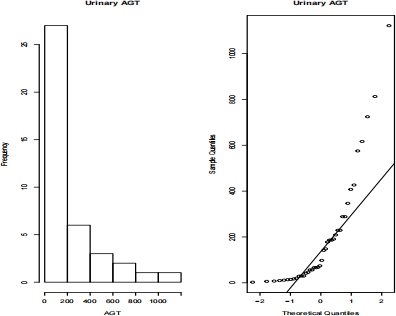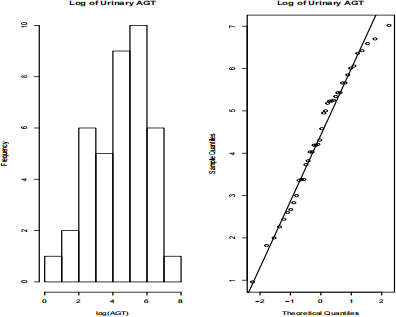MATH 203 PRINCIPLES OF STATISTICS I
Hello, dear friend, you can consult us at any time if you have any questions, add WeChat: daixieit
MATH 203
PRINCIPLES OF STATISTICS I
Assignment #3
1. A survey of Canadian teens aged 12 to 17 years reported that roughly 75% of them used a fee-based website to download music. You decide to interview a random sample of 20 U.S. teenagers. For now, assume that they behave similarly to the Canadian teenagers.
(a) What is the distribution of the number X of teenagers who used a fee-based website to download music? Explain your answer.
(b) What is the probability that at least 15 of these 20 teenagers in your sample used a fee-based website to download music?
(c) Suppose that only 60% of U.S. teenagers used a fee-based website to download music. If you interview 20 U.S. teenagers at ran-dom, what is the mean of the number X of teenagers who used a fee-based website to download music? What is the standard deviation?
2. The U.S. government has devoted considerable funding to missile de-fense research over the past 20 years. The latest development is the Space-Based Infrared System (SBIRS), which uses satellite imagery to detect and track missiles (Chance, Summer 2005). The probability of an intruding object (e.g., a missile) will be detected on a flight track by SBIRS is 0.8. Consider a sample of 15 simulated tracks, each with an intruding object. Let X equal the number of these tracks on which SBIRS detects the object.
(a) Demonstrate that X is (approximately) a binomial random vari-able
(b) Give the value of p and n for the binomial distribution.
(c) Find P(X = 8), the probability that SBIRS will detect the object on exactly 8 tracks.
(d) Find P(X ≥ 8), the probability that SBIRS will detect the object on at least 8 tracks.
(e) Find E(X) and interpret the result.
3. The physical fitness of a patient is often measured by the patient’s maximum oxygen uptake (recorded in milliliters per kilogram, ml/kg). The mean maximum oxygen uptake for cardiac patients who regularly participate in sports or exercise programs was found to be 24.1, with a standard deviation of 6.30 (Adapted Physical Activity Quarterly, Oct. 1997). Assume that the distribution of maximum oxygen uptake for cardiac patients who regularly participate in sports or exercise pro-grams is approximately Normal.
(a) What is the probability that a cardiac patient who regularly par-ticipates in sports has a maximum oxygen uptake of at least 20 ml/kg?
(b) What is the probability that a cardiac patient who regularly ex-ercises has a maximum oxygen uptake of 10.5 ml/kg or lower?
(c) Consider a cardiac patient with a maximum oxygen uptake of 10.5. Is it likely that this patient participates regularly in sports or exercise programs? Explain.
4. A study suggests that the birth weight of a full-term baby is distributed as a Normal random variable with mean 3,500 grams and standard deviation 600 grams.
(a) What is the probability that the birth weight of a randomly se-lected full-term baby exceeds 4,000 gr.?
(b) What is the probability that the birth weight of a randomly se-lected full-term baby is between 3,000 gr. and 4,000 gr.?
(c) What is the probability that the birth weight of a randomly se-lected full-term baby is either less than 2,000 gr. or greater than 5,000 gr.?
5. The time it takes a runner of a marathon in a certain city to finish the race (finish time) has a distribution that can be approximated by a Normal distribution with a mean of 195 minutes and a standard deviation of 25 minutes. The faster 2.5% classify automatically for next year’s marathon. What finish time qualifies athletes automatically for the next marathon?
6. A machine that cuts corks for wine bottles operates in such a way that the distribution of the diameter of corks is well approximated by a Normal distribution with mean 3 cm and standard deviation 0.1 cm. The specifications call for corks with diameters between 2.9 and 3.1 cm. A cork not meeting the specifications is considered defective (a cork that is too small leaks and causes the wine to deteriorate; a cork that is too large does not fit in the bottle).
(a) What proportion of corks produced by this machine are defective?
(b) If you choose 15 corks at random produced by this machine, what is the probability that 5 of them will be defective?
7. A certain city the Transportation Authority (CTA) has trollies leaving regularly throughout the day beginning at 5:00 a.m. Although the length of a trip and the number of stops are constant, the time taken for each trip varies due to weather, traffic, and time of the day. According to the CTA, the mean time taken for the trip is 50 minutes. Suppose the travel time is Normally distributed with standard deviation σ = 4 minutes. A random sample of 25 trips is obtained, and the time for each is recorded.
Find the probability that the sample mean time will be less than 48 minutes.
8. In a certain city, milk tanker trunks follow a daily routine, stopping at the same dairy farms every day. Farm output, however, varies because of weather, time of the year, number of cows, and other factors. From years of recorded data, the mean amount of milk picked up by a truck for processing is 7,750 litres, with a standard deviation of 150 litres. Suppose 36 trucks are randomly selected.
(a) Find the probability that the sample mean amount of milk picked by the 36 trucks is more than 7,800 litres.
(b) Find the value m such that the probability that the sample mean is less than m is 0.1.
9. A produce packing company prepares crates of apples for shipping to supermarkets. Suppose that the weight of a randomly selected crate is known to have a mean of 20 kg and a standard deviation of 1.2 kg.
(a) If 100 crates prepared by this company are randomly selected, describe the approximate distribution of the mean weight of the sample. Justify your answer.
(b) Suppose the same 100 crates are placed into a truck for shipment. On the way to its destination, the truck must stop at a weighing station. If the combined weight of the cargo (not counting the weight of the truck) is more than 2015 kg, the truck must undergo further inspection. What is the approximate probability that this will occur?
10. A measure of kidney function is the urinary AGT (angiotensinogen) levels. The following are plots representing the distribution of AGT levels of 40 adults with chronic kidney disease
(a) Give your opinion on whether the distribution of AGT levels in adults with chronic kidney disease is Normally distributed.

(b) A new variable was created from ‘transforming’ the AGT levels by computing the ‘natural logarithm’ of each AGT level value. Give your opinion on whether the distribution of log-transformed AGT levels in adults with chronic kidney disease is Normally dis-tributed.

2021-11-11